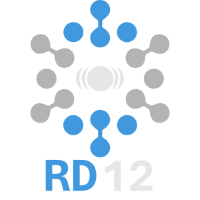Speaker
Description
Ten years on from the “resolution revolution”, molecular structure determination using electron cryomicroscopy (cryoEM) is poised in 2025 or early 2026 to surpass X-ray crystallography as the most used method for experimentally determining new structures [1]. But the technique has not reached the physical limits set by radiation damage and the signal-to-noise ratio in individual images of molecules. By examining these limits and recent work on radiation damage to biological molecules at different temperatures [2,3] and energies [4,5], I will identify opportunities for extending the application of single-particle cryoEM to smaller, larger and more difficult structures, and into specimens taken directly from vitrified cells. This will help guide technology development to continue the exponential growth of structural biology in the coming decade.
References
[1] A. Patwardhan, R. Henderson, C.J. Russo, Extending the reach of single-particle cryoEM, COSB in press (2025).
[2] K. Naydenova, A. Kamegawa, M. J. Peet, R. Henderson, Y. Fujiyoshi, C. J. Russo, On the reduction in the effects of radiation damage to two-dimensional crystals of organic and biological molecules at liquid-helium temperature, Ultramicroscopy 237 (2022) 113512.
[3] J. L. Dickerson, K. Naydenova, M. J. Peet, H. Wilson, B. Nandy, G. McMullan, R. Morrison, C. J. Russo. Reducing the effects of radiation damage in cryo-EM using liquid helium temperatures. PNAS 2025
[4] M.J. Peet R. Henderson C.J. Russo, The energy dependence of contrast and damage in electron cryomicroscopy of biological molecules, Ultramicroscopy 203 (2019) 125–131.
[5] G. McMullan et al. Structure determination by cryoEM at 100 keV. PNAS 120 (2023) e2312905120.

